Notes: Admaston Halt was situated on the Shrewsbury & Wellington Railway (S&W), a joint line of 10 miles that was authorised on 3 August 1846. The S&W partners were the Shrewsbury & Birmingham Railway (S&B) and the Shropshire Union Railways & Canal Company (SUR&CC). For the S&B the joint line provided a link to Shrewsbury for its Wolverhampton line and for the SUR&CC for its Stafford line. The S&W opened on 1 June 1849 as did the SUC&RC Stafford and Wellington line which was immediately leased to the London & North Western Railway (LNWR). The S&B opened from Wellington to Oakengates at the same time but it did not reach Wolverhampton until 12 November 1849.
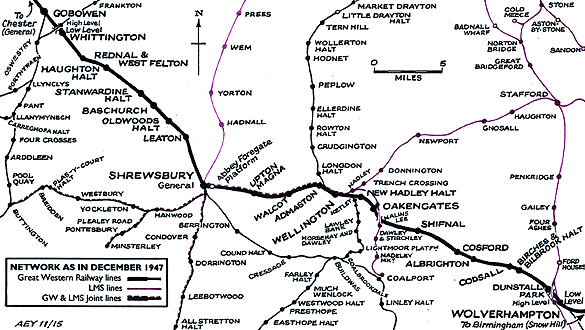 |
Admaston Halt opened as simply Admaston in September 1849. It was located on the south-western side of the settlement from which it took its name on the east side of Station Road which passed over the line on a bridge. Early maps show no facilities and it is likely that it would have been nothing more than a stopping place with access provided down to track level as the line was in a cutting at this point.
When Admaston opened it was served only by LNWR services that ran between Shrewsbury and Stafford using the SUR&CC line.
Admaston must not have been very successful when opened because within two months, in November 1849, it was closed. However it reopened in June 1850.
The S&B had close ties with the Shrewsbury & Chester Railway (S&C) and together the companies had aspirations to create an alternative route between the Midlands and the River Mersey. These intentions antagonised the LNWR who worked tirelessly to frustrate them. One of the ways in which the LNWR caused trouble for the S&B was stopping it from reaching Birmingham. Despite having Birmingham in its name the company was never able to gain access to the town over its own metals.
.gif) The Great Western Railway (GWR) also aspired to reach the River Mersey and it had the size and corporate muscle to take on the LNWR. This led to the S&B and the S&C becoming part of the GWR on 1 September 1854; the S&W became a joint line of the LNWR/GWR. The GWR had reached Wolverhampton in April 1854. A mixed gauge line (broad gauge at 7ft 0¼in and 4ft 8½in standard gauge) line was opened between Wolverhampton and Birmingham on 13 November 1854. This created the through route between Shrewsbury and Birmingham that the S&B had desired and a line between London Paddington and the River Mersey at Birkenhead that the LNWR had done everything in its power to stop. The Great Western Railway (GWR) also aspired to reach the River Mersey and it had the size and corporate muscle to take on the LNWR. This led to the S&B and the S&C becoming part of the GWR on 1 September 1854; the S&W became a joint line of the LNWR/GWR. The GWR had reached Wolverhampton in April 1854. A mixed gauge line (broad gauge at 7ft 0¼in and 4ft 8½in standard gauge) line was opened between Wolverhampton and Birmingham on 13 November 1854. This created the through route between Shrewsbury and Birmingham that the S&B had desired and a line between London Paddington and the River Mersey at Birkenhead that the LNWR had done everything in its power to stop.
Under the GWR the line through Admaston became a busy trunk railway that carried express and local passenger trains and large volumes of freight. A Birmingham – Birkenhead express service was introduced on 1 May 1857 and a London Paddington – Birkenhead service on 1 October 1861. These were prestigious trains that called only at principal stations.
In those early years Admaston appeared only in the LNWR timetables for the Shrewsbury and Stafford service, and maps from as late as the 1880s show that the station still did not have any facilities. By the last decade of the nineteenth century, however, the station had gained platforms and a ticket office building. Located on the down platform the building was a mean, single-storey brick building. No facilities were provided on the up platform.
The December 1895 timetable showed five up and six down trains on Monday-to-Friday. By this time trains were running towards Birmingham. Three of the up services and four of the down were GWR-operated and two of the trains in each direction were LNWR services running between Shrewsbury and Stafford. On Saturday there was an extra train in each direction. On Sunday there was just one up and two down trains. The single up and one of the down trains were LNWR Stafford line services.
In 1903 9,976 tickets were sold at Admaston and 710 parcels handled.
The July 1922 timetable showed seven up and eight down trains Monday-to-Saturday.
.gif) On 1 January 1923 the LNWR became part of the London Midland & Scottish Railway (LMS) which meant that the line became a joint concern of the GWR/LMS. In that year 10,057 passenger tickets were sold and 4,684 parcels were handled. On 1 January 1923 the LNWR became part of the London Midland & Scottish Railway (LMS) which meant that the line became a joint concern of the GWR/LMS. In that year 10,057 passenger tickets were sold and 4,684 parcels were handled.
In 1933 ticket sales were 10,318 and 456 parcels were handled.
In the summer of 1947 there were eight up and seven down services on Monday-to-Friday, four of the trains in each direction being LMS services. On Saturday there was an extra up service. There were no trains on Sunday.
On 1 January 1948 Admaston became part of British Railways [Western Region] (BR[WR]). However services between Shrewsbury and Stafford were operated by the London Midland Region [LMR]. More BR[LMR] services called at Admaston than BR[WR] services.
On 30 June 1952 Admaston became an unstaffed halt. The word Halt was added to the station nameboards.
The BR[WR] timetable of 19 September 1955 to 10 June 1956 showed seven up and five down services on Monday-to-Saturday as seen in the table below. No trains called at Admaston Halt on Sunday.
| Up Trains 19 September 1955 |
Destination |
Down Trains 19 September 1955 |
Destination |
| 6.48am (WR Service) |
Wolverhampton Low Level |
8.10am (LMR Service) |
Shrewsbury |
| 8.00am (LMR Service) |
Stafford |
9.45am (LMR Service) |
Shrewsbury |
| 11.07am (WR Service) |
Wellington |
1.50pm (LMR Service) |
Shrewsbury |
| 12.36pm (LMR Service) |
Stafford |
4.32pm (LMR Service) |
Shrewsbury |
| 3.27pm (LMR Service) |
Stafford |
7.14pm (WR Service) |
Shrewsbury |
| 5.28pm (WR Service) |
Birmingham Snow Hill |
|
|
| 6.06pm (LMR Service) |
Stafford |
|
|
From 1 January 1963 Admaston Halt came under the operational control of (BR[LMR]) and was transferred fully to this region on 1 July 1963. During the Western Region era the station was not significantly modernised; totem name signs were not installed and GWR running-in boards continued to display the station’s name.
The BR[LMR] timetable for the summer of 1963 showed five trains in each direction Monday-to-Saturday. All of the trains ran to or came from Stafford.
By the time of the ‘Beeching Report’ (March 1963) the minor stations on the principal routes from Shrewsbury to Chester, Welshpool and Hereford were already closed, but those on the line to Wellington and Wolverhampton, however limited in importance, were still open. Although it was compiled following traffic censuses to assess the financial viability of passenger lines and stations the report, nevertheless, contained apparent anomalies; surely one of these is that Beeching proposed not to close any stations between Shrewsbury, Wellington and Wolverhampton. The accompanying map indicated, however, that the service would be ‘modified’ between Shrewsbury and Wellington – although the line was absent from the official list of modified services! Modification generally implied the closure of stations on a line which would remain open, though this clearly did not apply to Shrewsbury-Wellington. Dancing in the streets of Admaston, Walcot and Upton Magna must have quickly given way to gloom when on 11 October 1963, in addition to the formal announcement of the intention to close the Wellington–Stafford line (which was in ‘Beeching’) the three intermediate stations between Shrewsbury and Wellington (which were not) would be thrown in with it. On 27 May 1964 Ernest Marples, Secretary of State for Transport, decided that these services would end just over three months later, on 7 September.
After closure Admaston was demolished leaving little trace.
The line continued to be a busy railway linking the West Midlands to Shrewsbury and remained so in 2016.
Tickets from Michael Stewart and route map by Alan Young
Sources:
- A Regional History of the Railways of Great Britain - Volume 7 The West Midlands - Rex Christiansen - David & Charles 1973
- Encyclopaedia of British Railway Companies - Christopher Awdry - Guild Publishing 1990.
- Paddington to the Mersey - Dr R. Preston Hendry & R. Powell Hendry - Oxford Publishing Company 1992.
- Railway Passenger Stations in Great Britain - A Chronology - Michael Quick - Railway & Canal Historical Society 2009.
- Wolverhampton to Shrewsbury - Vic Mitchell & Keith Smith - Middleton Press 2009.
To see the
other closed stations on the Wolverhampton - Chester General line
click on the station name: Wolverhampton Low Level, Dunstall Park, Stafford Road, New Hadley Halt, Walcot, Upton Magna, Abbey Foregate,
Shrewsbury S&C, Leaton, Oldwoods Halt, Baschurch, Stanwardine Halt, Haughton Halt, Rednal & West Felton, Whittington Low Level, Weston Rhyn, Whitehurst Halt, Rhosymedre, Cefn, Rhosymedre Halt, Wynnville Halt, Rhos, Johnstown & Hafod, Rhosrobin Halt, Gresford, Rossett,
Pulford, Balderton and Saltney |

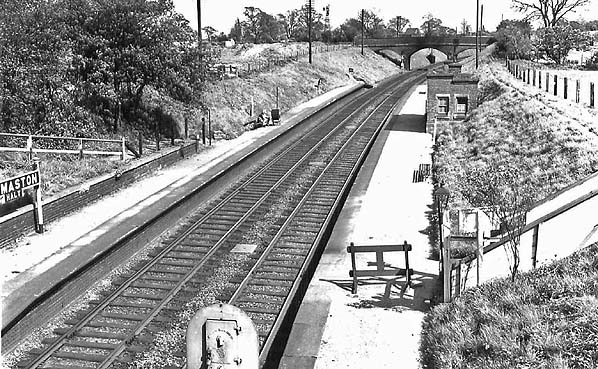
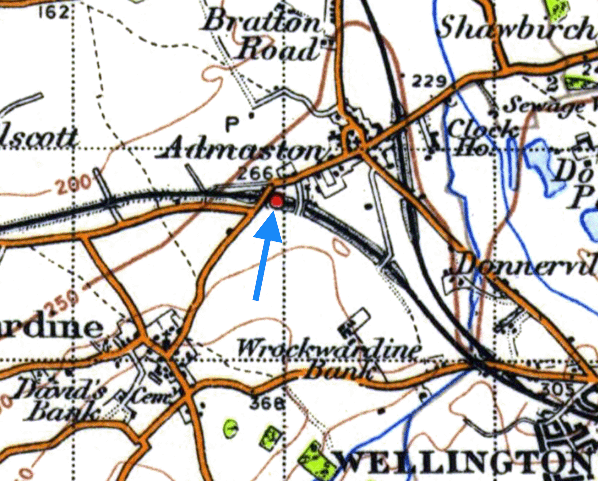
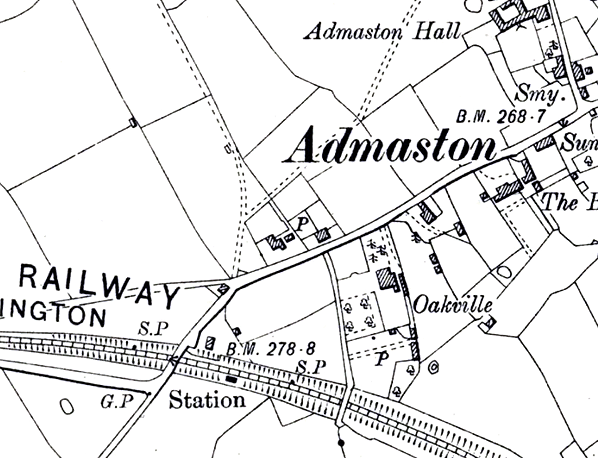
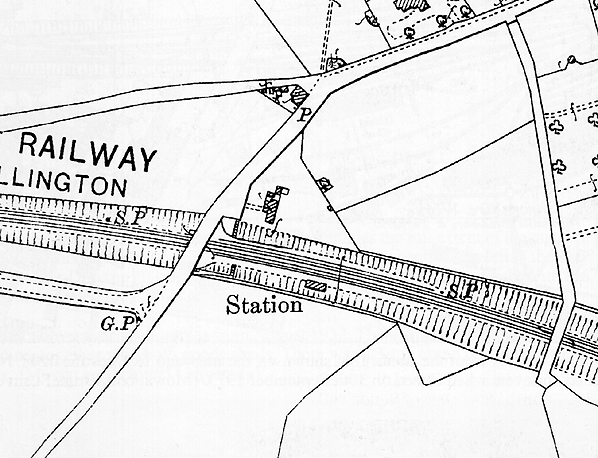
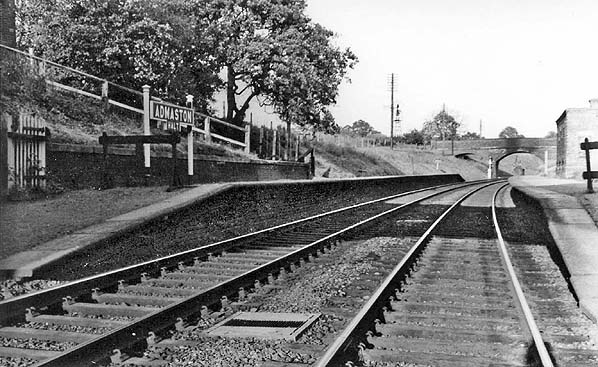
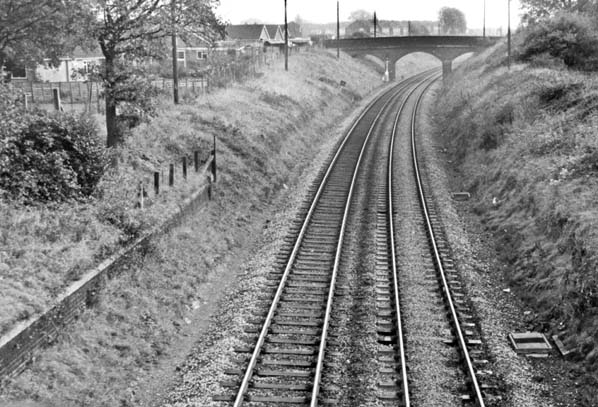
.jpg)
.jpg) The Admaston station house looking south on 8 March 2016.
The Admaston station house looking south on 8 March 2016..jpg) A view of the up platform entrance at Admaston Halt looking south on 8 March 2016.
A view of the up platform entrance at Admaston Halt looking south on 8 March 2016..jpg)

.gif) The Great Western Railway (GWR) also aspired to reach the River Mersey and it had the size and corporate muscle to take on the LNWR. This led to the S&B and the S&C becoming part of the GWR on 1 September 1854; the S&W became a joint line of the LNWR/GWR. The GWR had reached Wolverhampton in April 1854. A mixed gauge line (broad gauge at 7ft 0¼in and 4ft 8½in standard gauge) line was opened between Wolverhampton and Birmingham on 13 November 1854. This created the through route between Shrewsbury and Birmingham that the S&B had desired and a line between London Paddington and the River Mersey at Birkenhead that the LNWR had done everything in its power to stop.
The Great Western Railway (GWR) also aspired to reach the River Mersey and it had the size and corporate muscle to take on the LNWR. This led to the S&B and the S&C becoming part of the GWR on 1 September 1854; the S&W became a joint line of the LNWR/GWR. The GWR had reached Wolverhampton in April 1854. A mixed gauge line (broad gauge at 7ft 0¼in and 4ft 8½in standard gauge) line was opened between Wolverhampton and Birmingham on 13 November 1854. This created the through route between Shrewsbury and Birmingham that the S&B had desired and a line between London Paddington and the River Mersey at Birkenhead that the LNWR had done everything in its power to stop..gif) On 1 January 1923 the LNWR became part of the London Midland & Scottish Railway (LMS) which meant that the line became a joint concern of the GWR/LMS. In that year 10,057 passenger tickets were sold and 4,684 parcels were handled.
On 1 January 1923 the LNWR became part of the London Midland & Scottish Railway (LMS) which meant that the line became a joint concern of the GWR/LMS. In that year 10,057 passenger tickets were sold and 4,684 parcels were handled..gif)
.gif)

 Home Page
Home Page